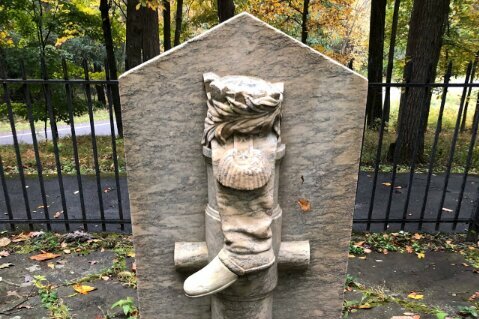(BPT) – Once a loyal leader in the American Revolution, Benedict Arnold eventually flipped sides and became a traitor to the cause he once loved. In the aftermath of his unsuccessful attempt to betray the Revolution and secure victory for the British, Arnold was burned in effigy and reviled throughout the colonies. His failure was seen as the “hand of providence,” blessing the American cause and becoming the turning point for the Revolution. Author Stephen Yoch, in his latest book “Becoming Benedict Arnold,” notes that following victory, the new American republic never forgave his betrayal. Yoch describes examples that showcase America’s lingering anger. Boot Monument at Saratoga National Historical Park At the Battle of Saratoga, Arnold played a pivotal role in defeating the British. Today at the Saratoga National Historical Park in Stillwater, New York, there is a Boot Monument paying tribute to his bravery, but not mentioning him by name. The boot is made to recognize the honorable part of his body that was severely injured in the battle. The inscription reads: “In memory of the most brilliant soldier of the Continental Army, who was desperately wounded on this spot, winning for his countrymen the decisive battle of the American Revolution, and for himself the rank of Major General.” Saratoga Monument and the empty niche The impressive victory obelisk, a landmark stone pillar with four niches at the Saratoga cemetery, contains sculptures. Gen. Horatio Gates, Col. Daniel Morgan and Gen. Philip Schuyler occupy three of the niches. The fourth niche is prominently empty to emphasize the place that Arnold would have occupied but for his treachery. The nameless West Point plaque The U.S. Military Academy at West Point commemorates all generals who served in the Revolution. There is one plaque which only states a rank and date: “For Major General born 1740” but no name. Again, identifying Arnold but excising his name from the narrative. Plaque at Fort Ticonderoga America’s anger toward Arnold did not lessen over time. Visitors today can see the plaque erected at Fort Ticonderoga in New York in 1967 which recounts the history of the fort and discusses the surprise attack on May 10, 1775, by Ethan Allen to secure the then-British-occupied fort, but fails to mention that attack was also led equally by Benedict Arnold. Valcour Island battle memorial Examples of America erasing the memory of Arnold continue into the 21st century. In 2011 in Peru, New York, a plaque commemorating the pivotal battle of Valcour Island on Oct. 11, 1776, states: “Across this strait a small colonial fleet fought the British to a standstill causing a 3 day running conflict that delayed the British advance to divide the 13 colonies. This action allowed the time for the Americans to rebuild their forces and win the Battle of Saratoga in 1777.” This plaque makes no mention of Arnold who organized the entire American defense and fought with indisputable bravery. As Yoch explains, “Arnold’s treason was breathtaking and at a pivotal moment of American vulnerability. Had he succeeded, the entire course of American history would likely have been different. Perhaps it’s the scale of his treason and the fact that he died peacefully in his bed in England that continues to grate over two centuries later.” For more information and to order “Becoming Benedict Arnold,” visit Amazon.com.

Benedict Arnold who? How America tries to forget its greatest traitor
Oct 31, 2023 | 5:07 PM



